“The automotive parts manufacturing process comprises a wide range of operations including design, development, marketing, selling, repairing, and modification of different inside components used in motor vehicles.”
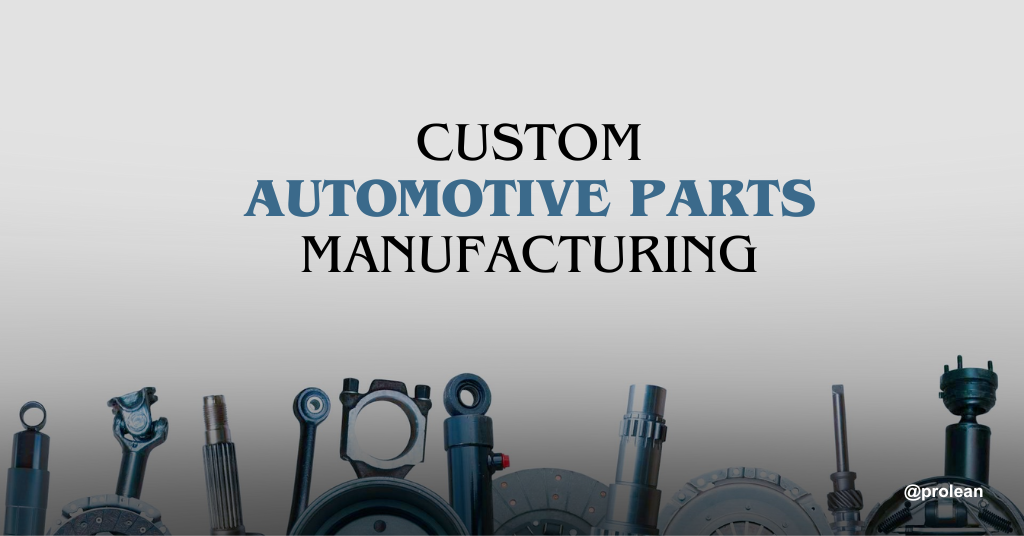
The automotive sector is one of the world’s most renowned industries with a significant global economy revenue share. It is known for its machinery advancements which are improving over time. When it comes to upgrades, custom automotive parts manufacturing plays a key role for vehicles with great advantages for hybrid modifications.
Moreover, it enables the vehicle to perform at its optimal efficiency with just a little tweak of internal components. These additions make custom automotive parts a go-to choice for most customers due to their versatility and durability across global markets. This article will discuss custom automotive parts manufacturing in detail, by highlighting the benefits, and workflow.
What is Custom Automotive Parts Manufacturing?
As the term suggests, custom automotive parts manufacturing is the process of making high-quality parts that take the efficiency of motor vehicles to the next level. Custom automotive parts manufacturing includes the use of different materials and techniques to produce components like fastenings, anti-vibrations, gaskets, seals, and attachments.
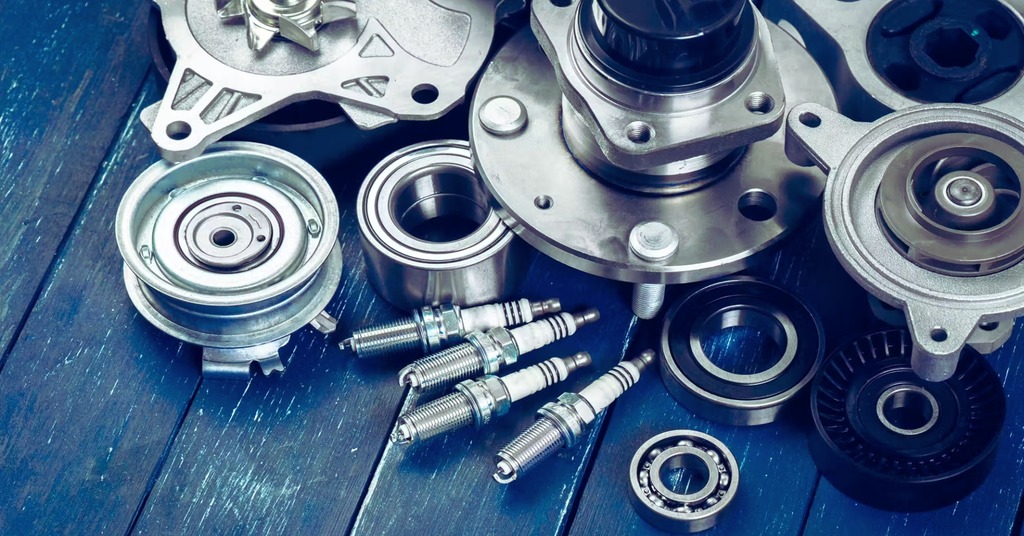
Custom Automotive Parts
Many automotive manufacturers are affiliated with other companies that create these custom parts. Customization is the key aspect as each manufacturer orders parts to meet their standards. There are many protocols to follow for custom automotive parts manufacturing. For instance, the compatibility with particular vehicles, their durability, and efficiency. All these aspects rely directly on the type of machining solutions and types of materials used in creation.
Try Prolean Now!
Machining Techniques For Manufacturing Automotive Parts
When it comes to custom automotive parts manufacturing, various techniques are available to fabricate different automotive components such as CNC machining, additive manufacturing, injection molding, and metal stamping, etc.
Let’s take a closer look at the machining techniques commonly employed for automotive parts manufacturing:
1. Injection Molding
Injection molding is a widely adopted technique in the automotive industry to produce a variety of plastic components such as interior trim pieces, dashboard panels, door handles, bumpers, and exterior body parts like grilles and fascias. Injection molding is advantageous for automotive parts production due to its ability to produce high volumes of parts with complex geometries and tight tolerances at a relatively low cost per unit.
Moreover, It offers design flexibility, enabling the integration of features such as ribs, bosses, and intricate textures directly into the part design.
2. CNC Machining
CNC machining is used to manufacture a wide range of metal automotive components, including engine parts, cylinder heads, pistons, crankshafts, transmission components gears, shafts, suspension parts, control arms, bushings, brackets, and mounts.

Automotive Part CNC Machining
CNC machining offers high precision, allowing for the production of automotive parts with tight tolerances and complex geometries. Moreover, It is suitable for producing both prototype and production parts in low to medium volumes. In addition, CNC machining is versatile, and capable of working with various metals including aluminum, steel, titanium, and alloys, enabling the fabrication of durable and high-performance automotive components.
3. Sheet Metal Stamping
Sheet metal stamping is used to produce a wide range of automotive components, including body panels, hoods, doors, fenders, frame rails, floor pans, brackets, hinges, and other sheet metal parts.
Sheet metal stamping is beneficial for automotive part production due to its ability to produce parts with high strength, stiffness, and dimensional accuracy. It offers high production rates and can produce large, complex parts with minimal material waste. Additionally, sheet metal parts can be easily coated, painted, or welded to meet specific automotive design requirements.
4. Die Casting
Die casting involves injecting molten metal, typically aluminum or zinc alloys, into a steel mold cavity under high pressure. The molten metal fills the mold cavity, solidifies, and the part is ejected from the mold. Die casting is used to produce a wide range of automotive components, including parts like cylinder heads, engine blocks, housings, clutch covers, brackets, and connectors.
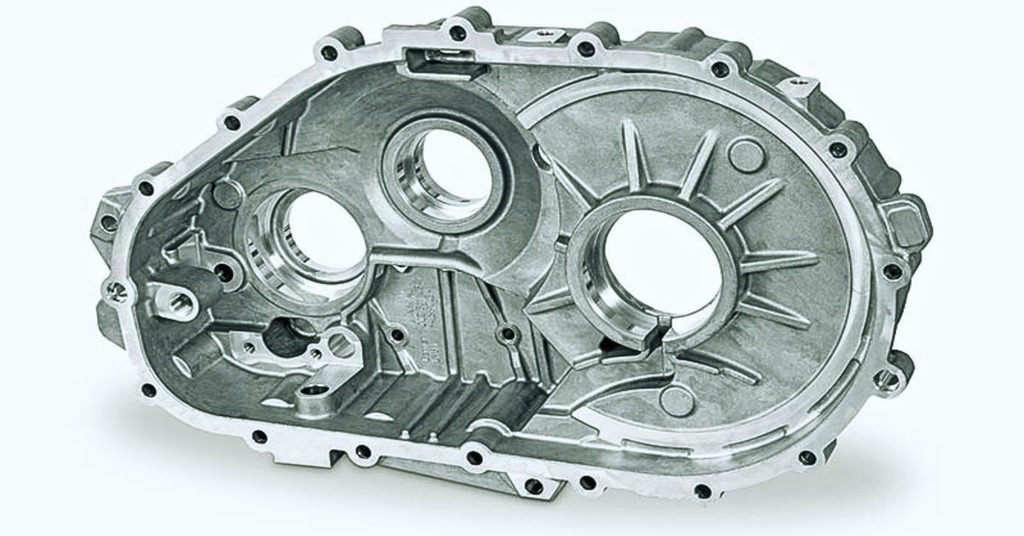
Die-cast automotive engine part
Die casting yields high dimensional accuracy, excellent surface finish, and a high strength-to-weight ratio, making it suitable for producing complex and durable automotive parts. Moreover, It is cost-effective for medium to high-volume production runs and allows for tight tolerances and intricate designs.
6. Additive Manufacturing (3D Printing)
Additive manufacturing, or 3D printing, builds up parts layer by layer from digital 3D models. 3D printing is used in the automotive industry for prototyping, tooling, and manufacturing low-volume and custom parts such as brackets, mounts, interior components, and complex geometries.
3D printing offers design flexibility, rapid prototyping capabilities, and the ability to produce complex geometries that are difficult or impossible to achieve with traditional manufacturing methods. In addition, It reduces lead times and tooling costs for prototype development and enables on-demand production of customized automotive parts.
7. Composite Materials Fabrication
Composite materials fabrication involves combining two or more materials, typically fibers such as carbon fiber or fiberglass, and a resin matrix (epoxy), to create a composite structure. Composite materials are used in the automotive industry to produce lightweight and highly resilient components such as body panels, hoods, spoilers, and structural reinforcements. Composite materials offer a high strength-to-weight ratio, corrosion resistance, and design flexibility, making them ideal for reducing vehicle weight and improving fuel efficiency, performance, and durability.
Custom Automotive Parts Manufacturing Workflow
Globally, the automotive industry follows different production lines and workflows. Custom automotive parts manufacturing is also a part of these lucrative operations. But overall, the basic principles of manufacturing are almost identical. The process of custom automotive parts manufacturing involves various steps. Here are the core stages from early prototyping to end assembly and shipping.
Prototyping
In the first stage of custom automotive parts manufacturing, a proof of concept prototype is developed alongside a visual model. This prototype is then presented to the development team for further improvements and performance analysis. Since custom automotive parts must be versatile and more efficient compared to OEM parts, the prototype undergoes rigorous testing across various scenarios. The engineering team evaluates the CAD model’s performance, and after completing all test cycles, the prototype is approved for design and production. Depending on the complexity of the part, the prototyping phase can take weeks or even months until the final design is approved for the next stage.
Design and Production
The subsequent phase in custom automotive parts manufacturing involves transitioning from the approved prototype to design and production. This stage sees the integration of assembly lines and industrial automation, with automation being particularly vital as machines handle tasks such as painting and welding for each component’s production. During the design phase, companies utilize various metals and raw materials to fabricate custom parts. Each production firm meticulously executes these processes as they directly influence the efficiency of the final product.
Quality Check and Assessment
The third stage of custom automotive parts manufacturing is equally significant to production. During this phase, the end deliverable undergoes rigorous real world testing to ensure quality.
The custom-built part is installed into the vehicle for evaluation of its quality and performance, a crucial step preceding its introduction to the market. These assessments confirm that each part operates according to plan and meets performance standards while adhering to compatibility guidelines for the vehicle.
Shipping
In the last stage of custom automotive parts manufacturing, the components are made available for public use by shipping them through authorized dealerships and manufacturers.
Try Prolean Now!
Raw Materials for Custom Automotive Parts Manufacturing
Raw materials play a pivotal role in the whole workflow of custom automotive parts manufacturing. The use of each type of material and its grades define the end product. These materials also determine the performance and quality of the components.
1. Steel
Steel, along with its various types, plays a crucial role in the production of custom automotive parts, serving as the most widely consumed raw material that directly influences component efficiency. The key differentiator among competitors producing similar custom components often lies in their selection of steel types and complementary elements. Steel manufacturers offer different grades intended to the automotive sector, providing varying levels of rigidity suitable for diverse vehicle components.
2. Aluminum
Aluminum has emerged as a primary metal in the manufacturing of car components, with bauxite, one of its key ores, playing a crucial role in custom automotive parts production. Its lightweight nature and malleability make it well-suited for crafting various custom car components, enhancing fuel efficiency, and extending battery range in electric vehicles (EVs). According to some sources, the automotive industry utilizes approximately 466 pounds of aluminum in typical car production. In custom automotive parts manufacturing, aluminum can often replace steel in applications such as engine blocks.
3. Rubber
From tires to internal engine seals, rubber plays a significant role in vehicle production. It is an essential component for custom automotive parts manufacturing. Rubber helps companies manufacture numerous customized hoses, belts, and engine seals that define the working nature of the machine. Moreover, It is a durable component and can be customized into different shapes. The demand for different types of rubber is rising each year with over 65% being consumed by the automotive sector.
4. Petroleum
Petroleum serves as the raw material for producing plastics, which are essential components in custom automotive parts manufacturing. These plastics typically account for approximately 8% of the total vehicle weight. Various car components, including door handles, airbags, and dashboards, utilize these petroleum-derived plastics due to their versatility, lightweight nature, and durability for long-term use.
Advantages of Using Custom Parts for Vehicle Modifications
Custom modifications of vehicles improve performance to the extent that they impact the working efficiency of the machine. Installing custom automotive parts can significantly improve speed, suspension, usage of fuel, and carbon consumption within the engine. Other than these advantages here are some key benefits of using custom automotive parts for vehicle modification.
- Cost
Everyone considers vehicle modification a super expensive task but it can become budget-friendly with the help of custom automotive parts manufacturing. The aftermarket parts are built for custom performance and are usually more affordable than OEM components. In some cases, the difference is over 50% between custom parts and preinstalled vehicle components.
- Selection
The second most important aspect of using custom components is selection. Yes, selecting different types of components from different companies can alter the performance of the vehicle. For instance, installing a different size of fuel cylinder can increase consumption while giving a major speed boost. The selection of different components also adds positive competition in the market as custom manufacturers try hard to create the best possible product for the vehicles.
- Safety
Safety reasons also come in this list as many people are much more cautious, they add extra features like a roll cage and side airbags to improve safety in case of any mishap. But these are not the internal safety modifications. On the engine side of things, improving the suspension and braking system of the car by installing custom components is more beneficial than any other customization. Custom automotive parts manufacturing plays a major role in the safety and precaution department as well.
- Replacement Convenience
The use of custom parts is convenient for most vehicle owners as it is easy to replace them on the go as the OEM parts are not readily available everywhere. As mentioned above, the cost is also lower (depending on the production company) compared to OEM parts. By custom automotive parts manufacturing, vehicle companies can significantly improve the customer experience worldwide, driving sales and improving overall convenience and comfort.
How Pro-lean Can Help In Your Custom Automotive Manufacturing Project?
Prolean’s best-in-class metal-cutting services help companies craft the right components for their vehicles. We deal in precision when it comes to molding raw materials for custom automotive parts manufacturing.
From small quantity prototyping of components to mass production, Prolean’s platforms offer businesses the best on demand cutting. Choose precision for your next product with us at an affordable price.
Contact us now to get a complete walkthrough of our services and let’s create your next car component which will stand out in the market. Send us your design and get an instant quote.
Read more:
- Manufacturing On Demand
- Sheet Metal Stretching Process: A Step-by-Step Guide
- CNC Vs. Traditional Grooving: A Comprehensive Com
Try Prolean Now!
Summing Up
Custom automotive parts manufacturing has become the most prominent process of crafting top-quality components uniquely designed to optimize vehicle performance. Using diverse materials and techniques, manufacturers produce specialized parts such as fastenings, gaskets, and attachments.
Collaborative partnerships with specialized companies are imperative to ensure customized solutions that meet stringent standards. Moreover, this article entails essential details on techniques, advantages, raw materials, and strategies to utilize for efficient and optimal operations intended to your needs.
FAQs
Q1. What are the steps of Custom Automotive Parts Manufacturing?
Custom automotive parts manufacturing involves different stages. The core parts are prototyping, design & production, real-world quality checks, and shipping.
Q2. What are the safety regulations for custom manufacturing?
Implementing a safety checklist when manufacturing different components can help prevent risks and failures. Other safety regulations include training, reporting, and use of safety equipment.
Q3. How is quality maintained in custom automotive parts manufacturing?
Quality control is a core phase in the custom automotive parts manufacturing cycle that puts the component into different tests to identify defects and eliminate them before final assembly.
Q4. What is the role of automation in parts manufacturing?
Automation in manufacturing refers to the use of technology to perform various tasks. Automation robots help in the design and production phase of manufacturing, increasing accuracy while reducing human error.
5. Which plastics are used to produce automotive parts?
Polypropylene is favored for interior components like dashboard trims and door panels, and the most commonly employed plastics for automotive parts include. Polyethylene finds use in components such as fuel tanks and underbody shields. Polyurethane is chosen for flexible foam components like seating cushions and armrests due to its comfort and shock-absorbing qualities. ABS, Acrylonitrile Butadiene Styrene is commonly used for both interior and exterior components, including trim panels and wheel covers.
Resource:
Joel C Vasco, (2021), Chapter 16, Additive Manufacturing for the Automotive Industry: Hand Book in Advanced Manufacturing : DOI: 10.1016/B978-0-12-818411-0.00010-0: Retrieved From: Science Direct

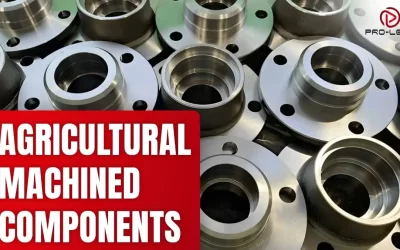
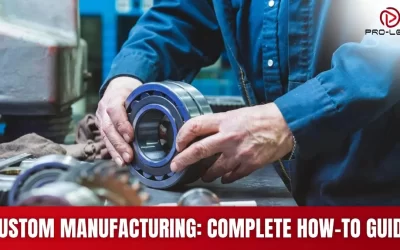
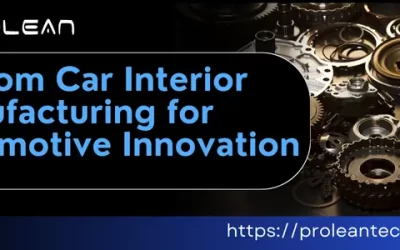
DO you provide automotive prototyping with aluminum extrusion ? We need it for out Kei-car startup.
Yes we provide comprehensive services from, design optimization to surface finishing and we are also flexible with production volume. Please upload your design on our quotation page! Thank you!